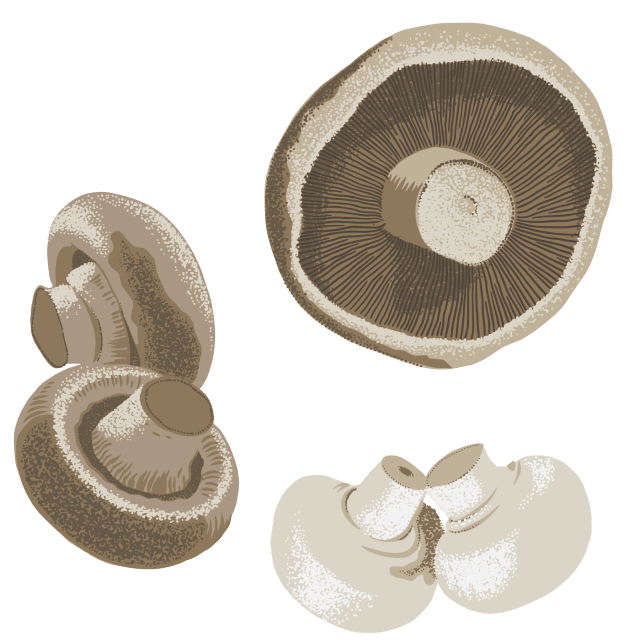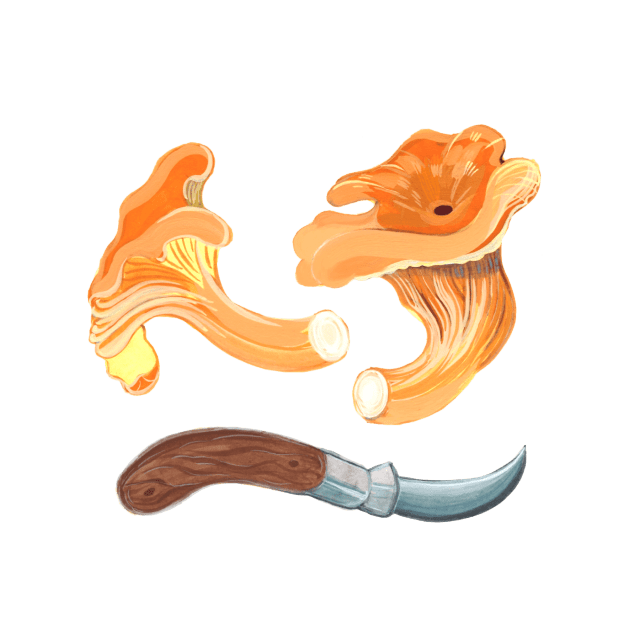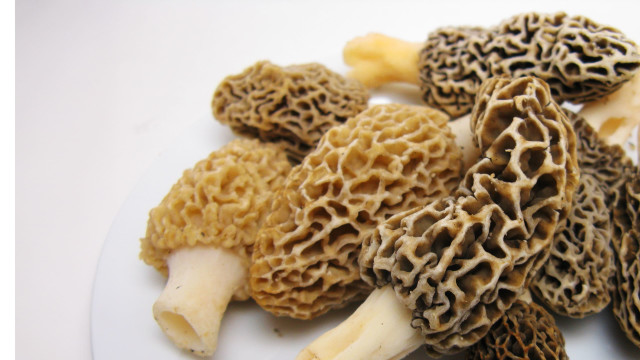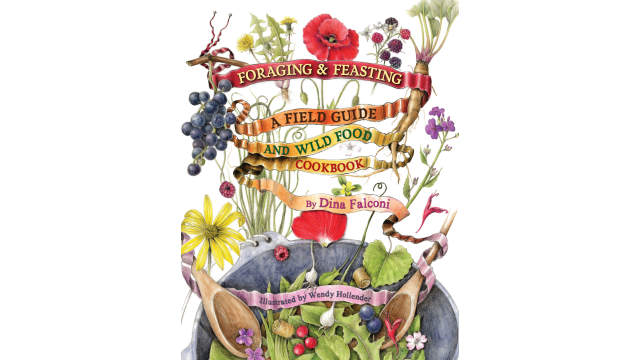Morel
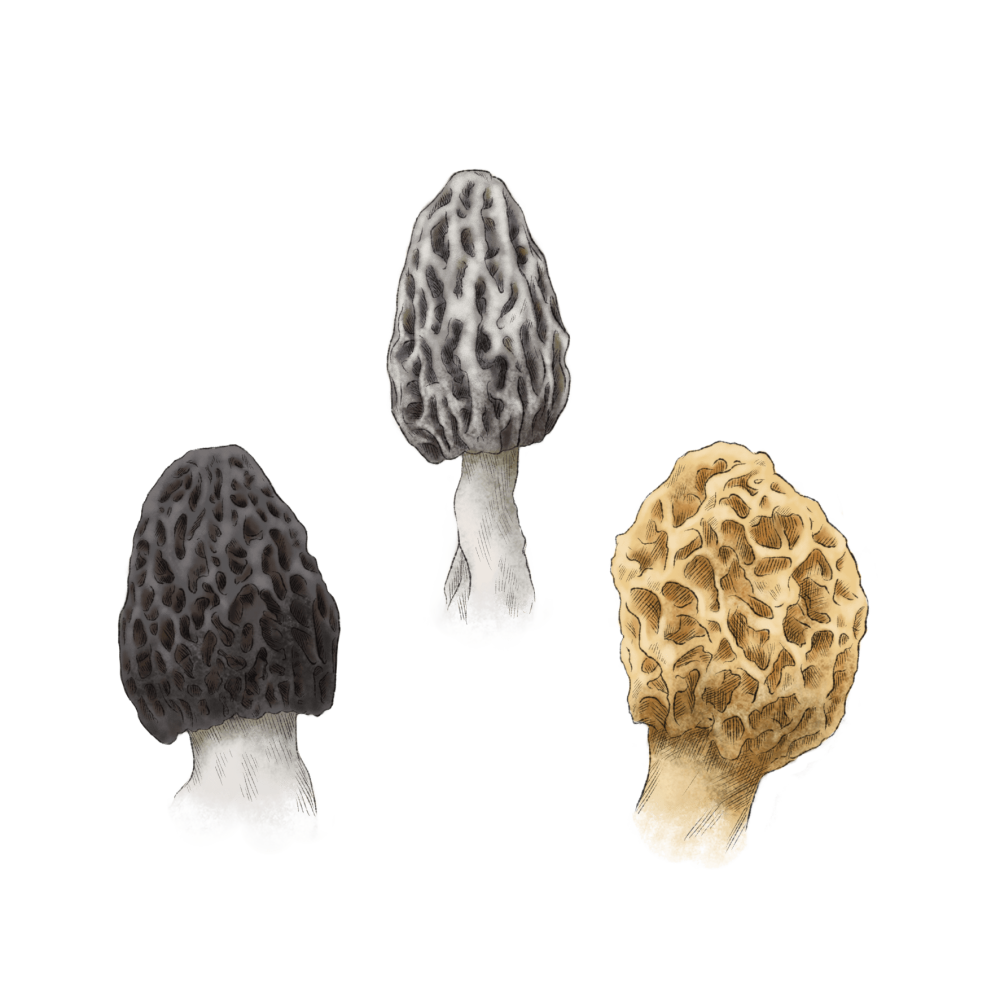
Latin name: Morchella esculenta, M. elata, and other species
Other names: common morel, black morel
Uses: edible mushroom
What are morels?
Morels are those funny fungi that look kind of like wrinkly little alien brains. They’re usually light brown in color but the color can vary slightly depending on the species. True morels make up three distinct groups in the morel family (Morchellaceae): the white, yellow, and black morels, but some mycologists think the gray morels (Morcella tomentosa), which are associated with wildfires, deserve their own clade too.
Why are morels healthy?
Like all mushrooms, morels mostly made up of water, but a 100-gram serving of morels (roughly 1 ½ cups) also has a whopping 94% of your recommended daily value of iron and a lot of vitamin D. Morels are the only source of the amino acid cis-3-amino-L-proline, which the human body can use to build connective tissues found in joints and tendons. Additionally, morels are an excellent source of B vitamins that help improve mood and support longevity. They also contain higher amounts of fiber and protein than most other mushrooms.
What do morels taste like?
Morels are considered by many epicures to be one of the best-tasting fungi. They taste like the forest, with a delicate mushroom flavor with a nutty earthiness and a fine texture. They’re high in glutamic acid — nature’s MSG — and have a deep savory quality that improves the flavor of everything they’re cooked with.
How do I use morels?
Whether you buy them at the market or pick them yourself, fresh morels must be soaked in cold salt water for a minute or two to purge the tiny bug larvae that love hiding in morels’ many nooks and crannies. Set a plate on top to keep them submerged, then swish them to free any debris, give them a rinse, and then pat them dry before adding them to your favorite sauces and sautés. Dried morels should be soaked in hot water for 15 minutes before using; strain the flavorful soaking liquid through cheesecloth or a coffee filter and put it in soups and sauces.
What do morels pair well with?
As a springtime mushroom, morels love other springtime foods like fiddlehead ferns, asparagus, new potatoes, and, peas. Also try them with lemon and tender herbs like tarragon, dill, and chervil.
Where do morels grow?
Various morel species grow throughout the temperate regions of the world and the common morel is found throughout the eastern and midwestern portions of North America, especially associated with pine, beech, hickory, sycamore, ash, and elm forests. In the western part of the North America, Europe, and Asia, the black morel (M. elata) is more common; these are primarily found in fir forests. Both species are especially prolific in the spring following a forest fire.
How do I buy morels?
Most higher-end grocery/gourmet stores and farmers markets will stock fresh morels when they’re in season from about early April to mid-May, but you can find dried morels year-round. Store fresh morels in a paper bag in the refrigerator and use them before they get moldy or slimy (they’re ok if they get a little shriveled).
Surprising morel fact:
If you want to pick your own morels, be aware of the giant’s false morel (Gyromitra gigas). Recent studies suggest a relationship between consuming the giant’s false morel and the neurodegenerative disorder amyotrophic lateral sclerosis (ALS, also known as Lou Gehrig’s disease).
